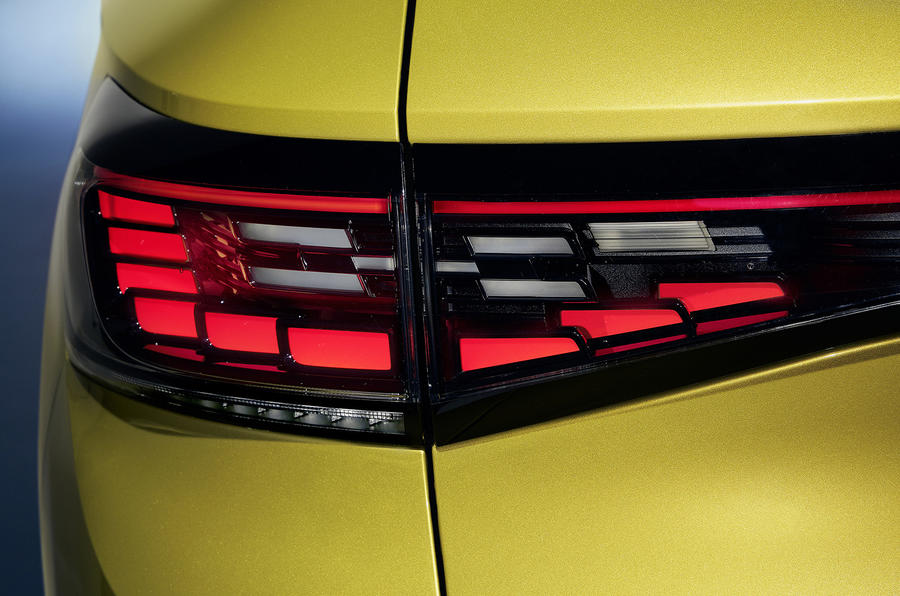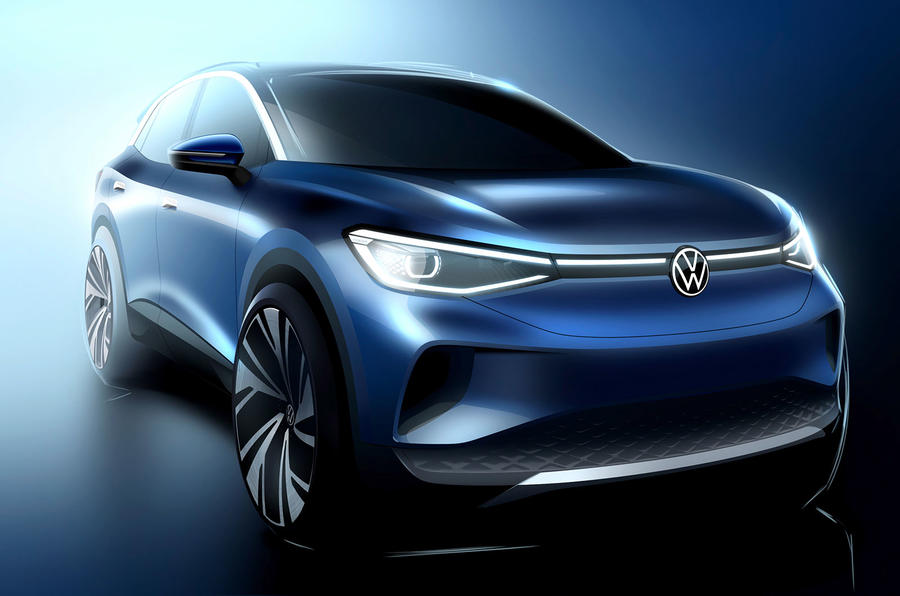The new Volkswagen ID 4 will be unveiled tomorrow (Wednesday 23 September), and the firm has continued its build-up to the reveal by showcasing the new IQ Light technology it will offer.
The electric compact SUV, which recently went into production in Zwickau, Germany, is the second machine built on the Volkswagen Group’s MEB electric platform, following the recently launched Volkswagen ID 3 family hatchback.
Autocar first drive: 2020 Volkswagen ID 4 prototype
Volkswagen says the ID 4 has been designed with a "powerful and sporty, but simultaneously also likeable character", which the new lighting plays a major part in. The large LED headlights at the front of the car are intended to give the ID 4 character, while the rear light clusters feature a '3D effect', with the brake lights designed in an X shape.

The IQ LED matrix headlight system, which features 11 individual LEDs that can be individually operated to control the direction of the lighting, will be offered as an option on the ID 4.
The headlight images are the latest in a series of ID 4 teasers, following a series of sketches showing the general design of the car.
The design of the ID 4, which was first seen as the ID Crozz concept, is based on the ID 3, with Volkswagen Group design chief Klaus Zyciora describing it as "clean, flowing and powerful". He added that the mix of gentle surfaces with clear edges was intended to make it to look "as if shaped by the wind itself".









































































































Join the debate
Add your comment
Advertorials
Has there been a single week in the past three years (the first comment on those article is from Sept 2017) without a new or reposted story about the VW ID range on Autocar? I really think it's unlikely. Given they are only just (or still not quite?) delivering the very first ID3s, that's a hell of a lot of marketing/advertising, especially as so many 'stories' are as insightful as 'aerodynamics were an important consideration when styling this car'.
I'm excited by the EV revolution, and even by some of these ID concepts, the Buzz looks great, but please stop this Autocar.
“As if shaped by the the Wind”
That line says all that's wrong with design today.
OK, slight rear-weight bias!
In production form it looks bit SUV-ish which probably is good commerce today. I was wondering how rear-wheel driven car would drive in snow and slippery conditions. However as the bias is just a bit to the rear, the key for traction after all is for the driven wheels to have enough percentage of the weight over them, so it should drive well enough after all in snow -- like the VW Beetle all these years back. Still, in slippery conditions that also means -- rear biased handling, meaining -- over-steer. Guess all the electronics are to take care of the driver in such a case. Still, if steering is accurate enough and direct enough, you should be able to catch the rear end before the car heads into the wilderness -- with rear end taking the lead. The looks of the car to my eyes seem -- contemporary. Which shall be important for sales. So claimed by some bit boring, however this vehicle is clearly intended to carry the major sales for Volkswagen into the future -- you simply don't take risks you don't need to with such a key vehicle. Volkswagen however could afford to do that, with specialized versions created on that same platform. Inevitably WAG style there shall be pletora of different vehicles under the entire line of brands, ample opportunity for style experimentation if Volkswagen sensibly avoids that -- for it's most important variant of that new chassis.